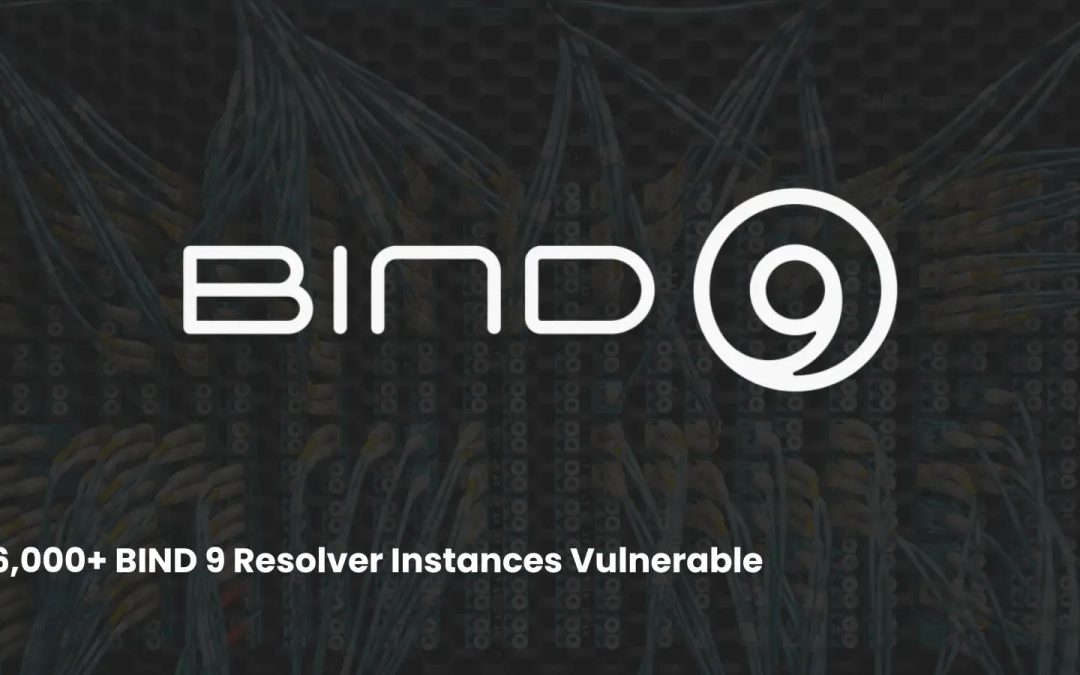“`html
A critical vulnerability in BIND 9 resolvers has been revealed, possibly allowing attackers to contaminate caches and reroute internet traffic to harmful sites.
Designated as CVE-2025-40778, this weakness impacts more than 706,000 exposed instances globally, as noted by the online scanning entity Censys.
Receiving a CVSS rating of 8.6, this problem arises from BIND’s excessively lenient treatment of unsolicited resource records in DNS replies, permitting off-path attackers to inject counterfeit data without direct network access.
The Internet Systems Consortium (ISC), the custodians of the widely utilized BIND software, published details on October 22, 2025, urging system administrators to implement patches without delay.
BIND 9 supports a significant portion of the internet’s domain name query processes, rendering this vulnerability particularly concerning for businesses, ISPs, and governmental bodies reliant on recursive resolvers.
While no current exploitation has been reported, the public availability of a proof-of-concept (PoC) exploit on GitHub raises the stakes, as it offers a framework for potential aggressors to design targeted attacks.
BIND 9 Resolver Vulnerability
At its essence, CVE-2025-40778 exploits a logical flaw in BIND 9’s resolver, whereby it accepts and stores resource records (RRs) that weren’t part of the initial inquiry.
During routine DNS functions, a recursive resolver dispatches inquiries to authoritative nameservers, anticipating responses that include only relevant replies, authoritative information, and supplementary sections.
Nevertheless, the affected versions fail to rigorously enforce bailiwick regulations, which confine records to the authority zone of the queried domain. This flexibility permits an attacker to race or forge responses, injecting incorrect address records like A or AAAA entries that point to compromised infrastructure.
The vulnerability affects BIND 9 versions from 9.11.0 to 9.16.50, from 9.18.0 to 9.18.39, from 9.20.0 to 9.20.13, and from 9.21.0 to 9.21.12, including Supported Preview Editions. Older versions prior to 9.11.0 are also suspected to be vulnerable, yet remain unassessed.
Only recursive resolver setups are at risk; authoritative-only servers are not impacted unless recursion is activated. Once compromised, the cache can misdirect downstream clients for hours or even days, depending on TTL values, leading to phishing, data interception, or service interruptions without prompting new lookups.
Censys’s examination, conducted following the disclosure, uncovered over 706,000 vulnerable BIND instances publicly accessible on the internet, highlighting the magnitude of the threat.
This figure likely underestimates the actual total, as it does not account for firewalled or internal setups. The flaw’s potential for remote exploitation across networks, with minimal complexity and no required privileges, categorizes it under CWE-349 for accepting extraneous untrusted data.
Though primarily an integrity concern, it could lead to wider assaults, such as man-in-the-middle situations or amplifying denial-of-service through redirected traffic.
Proof-of-Concept and Exploitation Risks
The PoC, published on GitHub by researcher N3mes1s, illustrates the injection method in a controlled environment to spoof replies and confirm cache poisoning.
It underscores how an off-path aggressor can observe query patterns and respond more swiftly than genuine servers, circumventing conventional defenses like source port randomization in certain instances.
While the code is aimed at educational use, security professionals caution it could be modified for practical deployment, particularly against unpatched systems.
No verified exploits in the wild exist as of October 25, 2025, but the vulnerability’s disclosure coincides with an uptick in DNS-related threats, including similar vulnerabilities like CVE-2025-40780, which also facilitates cache poisoning through foreseeable query IDs.
ISC remarks that the issue does not directly impact DNSSEC-validated zones, but incomplete implementations could still be vulnerable. Threat actors, including state-sponsored entities, have historically targeted DNS for sustainable access, making prompt patching essential.
To mitigate CVE-2025-40778, ISC advises upgrading to fixed versions: 9.18.41, 9.20.15, 9.21.14, or newer. For those unable to update immediately, limit recursion to trusted clients through ACLs, enable DNSSEC validation to cryptographically affirm responses, and monitor cache states for irregularities using tools like BIND’s statistics channel. Disabling additional section caching or instituting rate limiting on queries can further diminish exposure.
Organizations should inspect their networks for vulnerable BIND instances utilizing tools from Censys or Shodan and prioritize high-traffic resolvers.
As BIND remains fundamental to internet reliability, this occurrence serves as a reminder of the continuous cat-and-mouse dynamic in DNS security, with ISC pledging improved validation in upcoming releases.
“`

